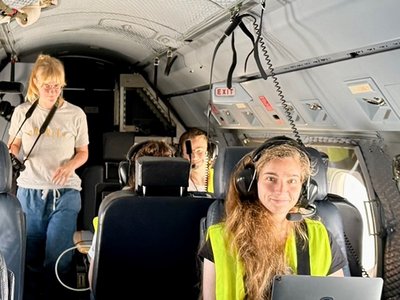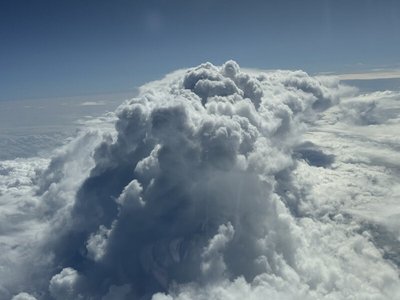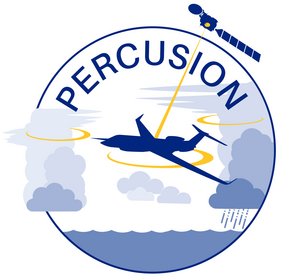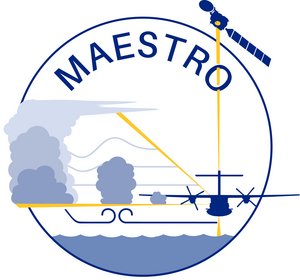ORCESTRA: Exploring Tropical Clouds and their Impact on Climate
Curious to learn more? Read below or check the ORCESTRA webpage for lived ORCESTRA updates.

In August and September 2024, the international measurement campaign ORCESTRA is taking place over the tropical Atlantic. ORCESTRA, short for "Organized Convection and EarthCare Studies over the Tropical Atlantic," aims to investigate the impact of the organization of tropical clouds on climate. Initiated by the Max Planck Institute for Meteorology, ORCESTRA regroups seventeen institutes from seven countries, operating and coordinating measurements from three research aircrafts, a research vessel, the new EarthCare satellite and ground-based stations in Cape Verde and Barbados.
The Role of Tropical Clouds in the Climate System

Tropical clouds play a crucial role in the global climate system. In the trade wind regions, fair-weather shallow cumuli clouds reflect sunlight, contributing to the regulation of Earth's temperature. The powerful rain of the deep cumuli clouds where the trade winds convergence provides about one-third of the global precipitation. Those deep clouds also play a vital role in transporting water vapor from the surface into the free troposphere, determining the vertical layering of atmospheric moisture and thus influencing the climate.
The broad region where the trade winds from the northern and southern hemispheres converge and where intense precipitation falls is called the Intertropical Convergence Zone (ITCZ). The rising air in the ITCZ is not only responsible for heavy rainfall but also forms the ascending branch of the Hadley circulation, one of the most important global airflow systems. Changes in the ITCZ and sea surface temperatures can cause significant variations in precipitation, affecting regions such as the Sahel.
Expected Changes and Uncertainties in a Warming Climate
The ITCZ is expected to change in a warming climate. However, how exactly global warming will affect the tropics and the ITCZ remains one of the most pressing research questions. Will the ITCZ shift or narrow as temperatures rise? How will energy balance and ITCZ behavior be influenced by convective and mesoscale organization? What regional impacts can be expected? Will Cape Verde experience more rainfall in the future? Will Senegal face longer dry periods? Will Barbados be more frequently affected by hurricanes?
Confidence in climate simulations of this region is limited, as conventional climate models have struggled for decades to accurately represent the ITCZ due to their coarse grid spacing. The classic image of the ITCZ as a continuous band of rain clouds stretching from east to west is challenged by the daily variability of the ITCZ. Studies show that the ITCZ presents a more chaotic picture, with significant daily changes in cloud amount and organization, and displaying more than one line of convergence. Novel storm-resolving climate models running at km-scale can in principle better represent the dynamics of the deeper cumulus clouds, their interactions with the environment, including the underlying ocean, and with the larger scales of motion, such as the Hadley cell, but their application is still in infancy.

Primary Objectives of ORCESTRA
ORCESTRA thus pursues several key objectives: The investigation of the physical mechanisms of tropical convection on the mesoscale is central. The interactions between convective organization and tropical waves, as well as the atmosphere-ocean processes that influence convection, are studied through a combination of state-of-the-art observational platforms and measurement instruments (3 aircraft, a research vessel, 2 ground stations). Additionally, the effects on the climate and radiation budget will be assessed, particularly how convective organization influences Earth's radiation balance and its role in tropical cyclogenesis. A key aspect of ORCESTRA is the validation of the EarthCare satellite mission, a joint project of ESA and the Japan Aerospace Exploration Agency (JAXA). EarthCare aims to improve the understanding of clouds, aerosols, and their interactions. By comparing in-situ data from ORCESTRA with EarthCare satellite observations, remote sensing techniques will be refined. Finally, the collected data will be used to optimize global ocean vortex and storm-resolving climate models and to advance the development of the next generation of climate models, enabling more accurate simulations of tropical meteorology and atmospheric processes.
The Campaign and it's Sub-Campaigns
ORCESTRA brings together a total of eight different sub-campaigns, each contributing unique perspectives and data collection techniques, all contributing in their own way to the overarching goal. These include:

PERCUSION (Germany): Aims to study deep convection near the ITCZ. The German research aircraft HALO is deployed for this purpose. This campaign builds on previous missions such as NARVAL and EUREC4A and explores new convection and aerosol regimes. The mission includes detailed studies on convective aggregation, aerosol-cloud interactions, and the low wind speed events in the doldrums. HALO will initially fly in the eastern tropical Atlantic (Cape Verde) and then in the western tropical Atlantic (Barbados), conducting coordinated underflights with EarthCare and validation flights to verify EarthCare data.

MAESTRO (France): Focuses on the mesoscale organization of tropical convection, using SAFIRE ATR-42 to collect high-resolution data on cloud structures and convective systems. The SAFIRE ATR-42 will fly in the lower troposphere, using a variety of instruments to investigate the interactions between structures in the lower layer, cloud properties near the cloud base, and the distribution of water vapor and temperature between clouds. The PERCUSION measurements from the HALO aircraft in the upper troposphere, which capture the dynamic and thermodynamic properties of the atmosphere, complement these measurements. Additional data will be provided by geostationary satellites and the EarthCare satellite.

BOW-TIE (Germany): Investigates atmosphere-ocean interactions and cloud dynamics in the ITCZ using ship-based observations. The research vessel MS METEOR follows a specific route through the ITCZ, collecting comprehensive data on the impacts of convective storms on the ocean and their interactions with the atmosphere. This route enables the creation of cross-sections of the ITCZ and upper ocean layers. The collected data will be combined with long-term observations from the PIRATA network and include measurements of precipitation, humidity profiles, wind speeds, temperatures, and salinity in the upper ocean layers.
Interaction of the various Platforms
The diversity and combination of platforms allow for comprehensive coverage of the tropical Atlantic and the capture of varying conditions in the ITCZ. For instance, most precipitation occurs in the east. Cape Verde in the east and Barbados in the west are central stations of the campaign. The German research aircraft HALO will start in Cape Verde and fly to Barbados, while the MS METEOR will follow the same path to survey the Atlantic.
These measurements are crucial for a comprehensive understanding of climate processes. The different locations and platforms complement each other optimally, covering a larger area to understand changes in atmospheric conditions along the route.
Each platform has specific capabilities that complement each other ideally. The EarthCare satellite provides snapshots of atmospheric conditions from space, while the MS METEOR research vessel continuously surveys the boundary layer between the ocean and atmosphere. The aircraft investigate clouds and their conditions at different altitudes: HALO reaches high altitudes and long distances, while the French ATR aircraft covers the lower and middle layers of the atmosphere. The combination of these platforms results in a complete profile of the atmosphere and ocean, providing a detailed and comprehensive picture of climate processes in the tropical Atlantic.
ORCESTRA will contribute to a better understanding of the central region of the tropical Atlantic, particularly the Intertropical Convergence Zone and its future changes. The data and insights gained from this campaign will be crucial in refining climate models and improving our understanding of the impact of cloud organization on the global climate. ORCESTRA marks another significant step forward in international climate research.

ORCESTRA will contribute to a better understanding of the central region of the tropical Atlantic, particularly the Intertropical Convergence Zone and its future changes. The data and insights gained from this campaign will be crucial in refining climate models and improving our understanding of the impact of cloud organization on the global climate. ORCESTRA marks another significant step forward in international climate research.
Further Information
ORCESTRA website
EarthCare website
Contact
Prof. Dr. Bjorn Stevens
Max Planck Institute for Meteorology
bjorn.stevens@mpimet.mpg.de
Dr. Julia Windmiller
Max Planck Institute for Meteorology
julia.windmiller@mpimet.mpg.de
Dr. Daniel Klocke
Max Planck Institute for Meteorology
daniel.klocke@mpimet.mpg.de
Yuting Wu
Max Planck Institute for Meteorology
yuting.wu@mpimet.mpg.de


